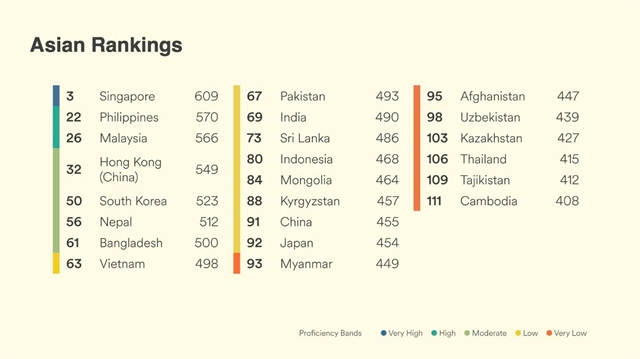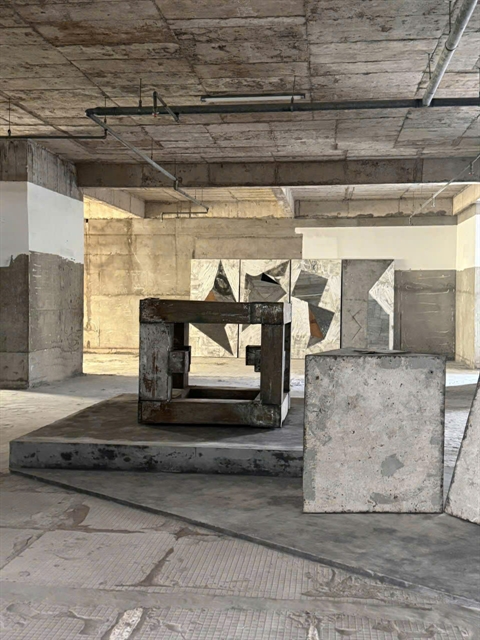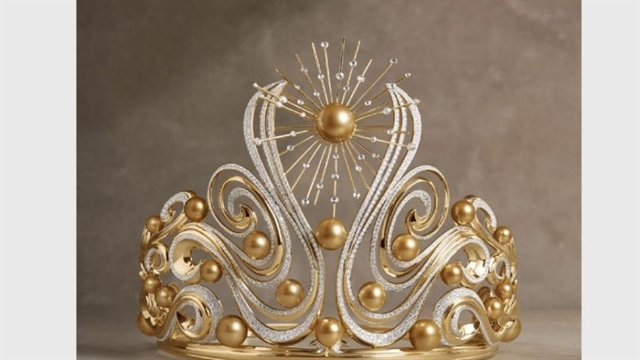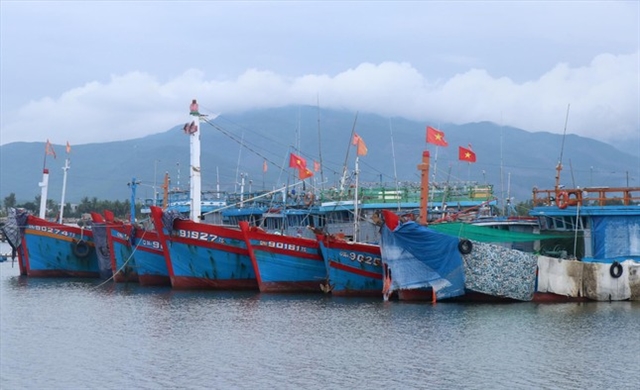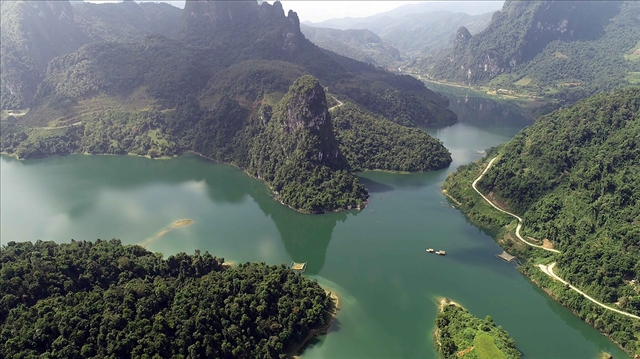 Travel
Travel

The central coastal province of Phú Yên attracted more visitors after the launch of Victor Vũ’s movie Yellow Flowers on Green Grass in 2015.
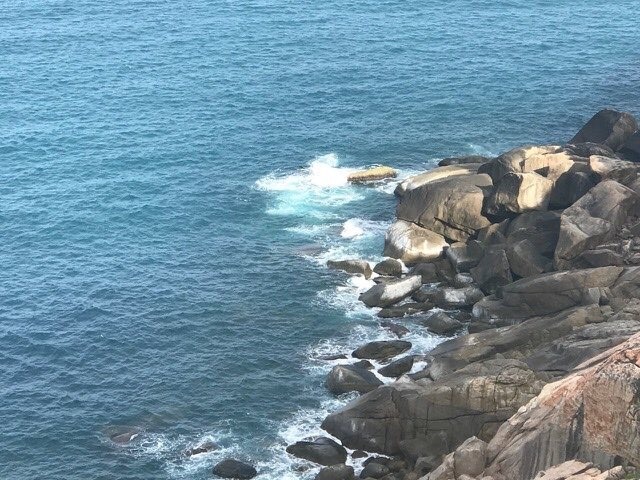 |
| Down to the sea: Big stones run to the sea along Phú Yên’s coastline. VNS Photos Lê Hương |
Lê Hương
The central coastal province of Phú Yên attracted more visitors after the launch of Victor Vũ’s movie Yellow Flowers on Green Grass in 2015.
During the past three years, the number of tourists has sharly increased, especially during public holidays such as Reunification Day (April 30) and Labour Day (May 1). For the first time in memory, all hotels and guest houses in Tuy Hòa City (2,600 rooms) have been fully occupied.
Phú Yên is one of the most beautiful provinces in the centre of the country. It has nearly 190km of coastline bordered with zigzag mountains and dotted with many bays, lagoons, cliffs and reefs.
Break of day
For those who like trekking up mountains to watch the sunrise, Mũi Điện (Đại Lãnh) light house is a must.
I was stunned at its location, but it was worth all the sweat and energy I lost during the 1km trek up.
The lighthouse stands on top of Mũi Điện (Điện Cape), which towers over the sea.
The cape is 35km southeast of Tuy Hòa City, so to catch the first sunrise, the journey up should begin very early from Tuy Hòa City.
Trekking up the steep winding path, a junction appears with three signposts: one points to the lighthouse, another leads to Mũi Điện, while the other points to Sunrise Cape.
At Mũi Điện, a signpost reads: "The easternmost point of Việt Nam, where the first sunrise appears". However, others believe that the first area to receive sunlight is Mũi Đôi (Đôi Cape) in the central province of Khánh Hòa.
However, I didn’t care which was the easternmost cape, I just felt moved to see a skyline not hidden behind high-rise buildings. And doing morning yoga in the early sunlight is one of my most enjoyable past-times.
Standing on top of Sunrise Cape watching the sun emerge over the horizon, my lungs filled with cool breeze, I felt as if time stopped.
The lighthouse was built by the French in 1890. It measures 26.5m and rises 110m above sea level and helps orient ships passing nearby Vũng Rô (Rô Bay).
The lighthouse was severely damaged during war time and was re-opened in 1995. It is one of eight light houses aged over 100 years in Việt Nam.
Many young people arrive at the light house late at night to wait for the sunrise.
"We camped here last night," said 20-year-old Phan Tiến Hải from HCM City, "Listening to soothing waves under the high cliffs, looking up the sky with so many stars and the light from the light house is a precious experience."
I can see the happiness in the eyes of Hải and His friends. They were cheerful in red T-shirts with a yellow star in the middle, joyfully taking photos of themselves in the early sunlight - with their hands on their chests.
I felt moved by their patriotism - the same feeling I experienced when I put my hand on my heart under the national flag at Lũng Cú in northern Hà Giang or at Cà Mau, the southernmost point of the country.
Down at the foot of Đại Lãnh Cape, Môn Beach has long white smooth beaches and smooth waves throughout the year. At the southern end of the beach, there is a fresh water stream running down from the mountain.
The 400-metre-long beach is bordered by Mũi Nạy (Nạy Cape) in the north and Mũi Điện (Điện Cape) in the south. The beach was recognised as a national landscape in 2008.
Within 5km from the cape, there are three national-level sites, including Môn Beach-Mũi Điện, Đá Bia Mountain and Vũng Rô. — VNS
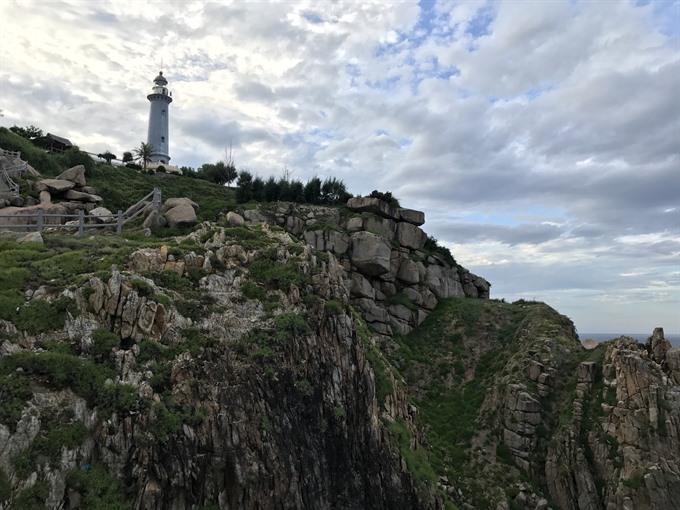 |
| Warning light: Đại Lãnh lighthouse stands on top of the cape. |
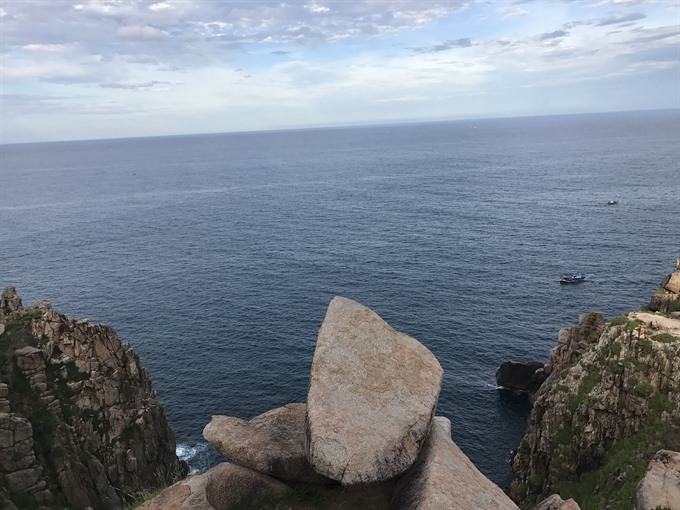 |
| Like toys: Ships look like small toys on the sea from Mũi Điện. |
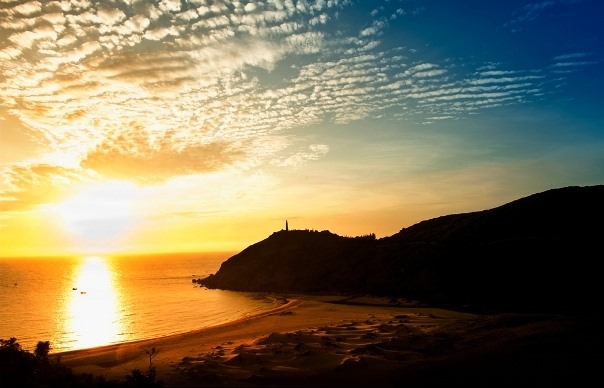 |
| Morning gold: Early sunrise at Mũi Điện and Môn Beach. |





